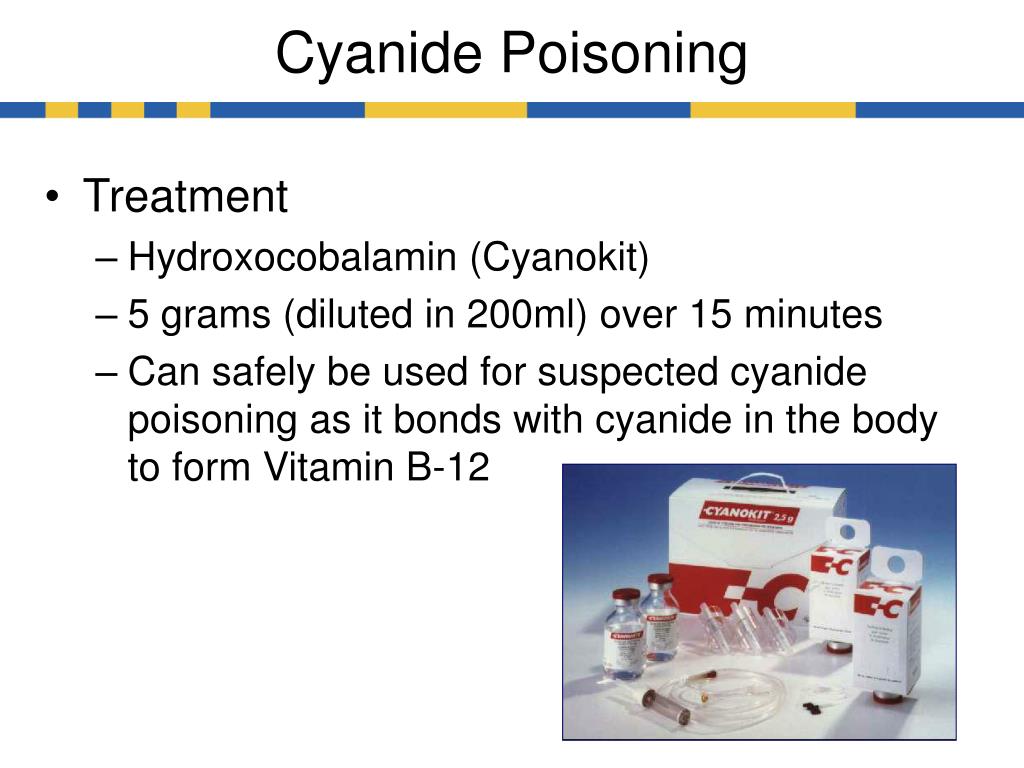
Vitamin B12 is essential to growth, cell reproduction, hematopoiesis, and nucleoprotein and myelin synthesis. Hydroxocobalamin is also used to treat megaloblastic anemia, pernicious anemia, and other states of vitamin B12 deficiencies. In addition, hydroxocobalamin has been shown to bind both intra- and extracellular cyanide. Unlike other treatments for cyanide toxicity, amyl nitrite and sodium nitrite, hydroxocobalamin does not cause methemoglobinemia or hypotension. Sources of cyanide toxicity include hydrogen cyanide and its salts, cyanogenic plants, aliphatic nitriles, and prolonged therapy with sodium nitroprusside. Cyanide toxicity can occur from inhalation, ingestion, or exposure of the skin to various cyanide-containing compounds, including smoke inhalation from confined space fires. Hydroxocobalamin is used to treat known or suspected cyanide toxicity. It may also cause transient hypertension, which can be beneficial in patients with cyanide poisoning.Hydroxocobalamin is a parenteral preparation of vitamin B12 specifically, it is the hydroxylated active form of vitamin B12. 2 Hydroxocobalamin imparts a harmless and transient reddish colour to the skin and urine. 1 By combining with cyanide, hydroxocobalamin forms cyanocobalamin (vitamin B 12), restoring mitochondrial function. Hydroxocobalamin should be administered as soon as cyanide poisoning is suspected - ideally in the prehospital setting. The nitrites induce methemoglobinemia, which can worsen hypotension and reduce the oxygen content of the blood, an important consideration in patients with concomitant carbon monoxide poisoning.

It is relatively safe and is better tolerated than the ingredients of the traditional cyanide antidote kit (amyl nitrite, sodium nitrite and sodium thiosulfate). Hydroxocobalamin has been approved recently as a therapy for cyanide poisoning.

The diagnosis is clinical and characterized by altered mental status, cardiovascular instability and lactic acidosis. However, treatment should not be delayed. Tests that can confirm a diagnosis of cyanide poisoning are rarely available. Cyanide poisoning often occurs in victims of smoke inhalation.


 0 kommentar(er)
0 kommentar(er)
